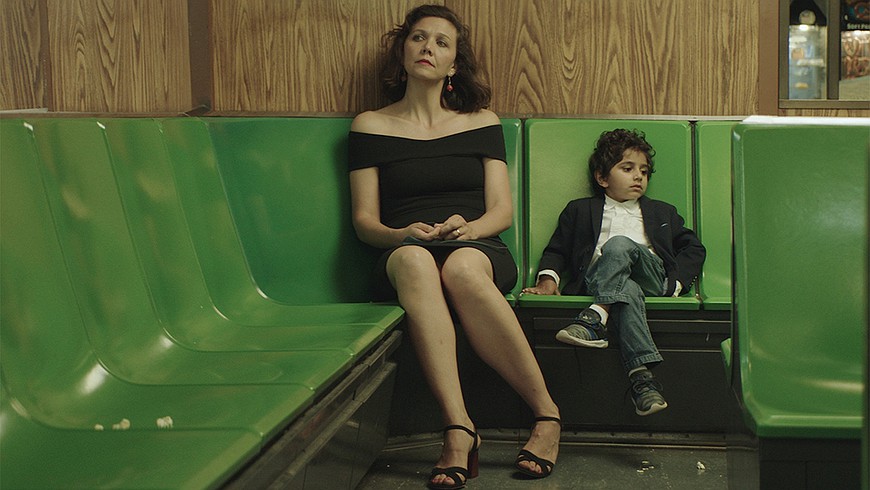THE KINDERGARTEN TEACHER
Övgü Bozgeyik
What is the role of a teacher, especially at kindergarten, and how far can she go for helping a student? The Kindergarten Teacher by Sara Colangelo asks questions about the roles of teachers, parents, and society on nurturing kids’ talents, but more importantly, the film portrays a kindergarten teacher who can go very far to keep a poetry ‘prodigy’ away from falling into life traps of the superficial society.
The Kindergarten Teacher
What is the role of a teacher, especially at kindergarten, and how far can she go for helping a student? The Kindergarten Teacher by Sara Colangelo asks questions about the roles of teachers, parents and society on nurturing kids’ talents, but more importantly the film portrays a kindergarten teacher who can go very far to keep a poetry ‘prodigy’ away from falling into life traps of the superficial society.
Lisa Spinelli is a kindergarten teacher with a joyless marriage. Even though everything seems to be just fine, her relationship with her husband is far from romantic, while her two children are already gone out of her control; daughter lost on social media and son wanting to go to military school. Lisa turns her all attention to her poetry class and to Jimmy, who is a five year old boy with a talent in poetry. According to Lisa, Jimmy is a poetry prodigy and needs to be nurtured well, so that his talent will not be wasted due to the society’s ignorance. In other words, she takes all the responsibility to make him a great poet, and she slowly leaks into Jimmy’s life, more than she should as his kindergarten teacher.
In films, teachers are often portrayed as positive figures who inspire and mentor their students, or they are portrayed as adverse characters, the antagonists against the lead actor or a student group. However, these two are not the only ways teachers are depicted in films. In their paper, Burbach and Figgins categorize teacher figures in the films, and they come up with titles such as incompetence/buffoonery teacher, idealistic and dedicated teacher, teacher as adversary (Burbach & Figgins, 1993). In The Kindergarten Teacher, however, we cannot put Lisa under a certain category. She may seem idealistic with her persistent actions about mentoring Jimmy’s artistic talents, however there is a negative connotation to her idealistic dedication. Although she starts with seemingly sincere and genuine intentions, her actions turn into a creepy series of obsessive behavior.
The movie turns into a psychological thriller as we see more of Lisa’s obsession with Jimmy. Even though she approaches Jimmy with good intentions, she crosses some ethical lines multiple times. Throughout the movie, we see Lisa trying to take Jimmy out of his safe zone. She takes Jimmy to poetry recital when he had to be at baseball practice, she takes him to museums without his father’s permission and she takes him (‘kidnaps’ is a better way to describe the situation) to near a lake to ‘nurture’ Jimmy’s poetry talent.
The imagery helps the audience to understand the relationship and the complexity of Lisa’s expectations. For example, when she takes Jimmy out of the playground she makes him open the gate of the wire netting and she takes him elsewhere. Here we can see a prison metaphor; it is as if Lisa saves Jimmy from a prison, which is the shallow society. However, this is only Lisa’s point of view of the story. When we look from the other side, or the society’s side, Lisa may be trapped in her fantasy about making a five-year old kid a famous poet, and with her reckless unethical actions we almost deem her a social psychopath and prison imagery works in the opposite direction.
“...prison metaphors that describe a segment of the world outside prison in terms of imprisonment frequently correlate with social criticism and are used to shed a critical light on a certain aspect of society (e.g., class) by demonstrating how restrained people may be even outside the walls of the prison.” (Alber, 2011)
In the movie, Lisa sees Jimmy as a kid who is trapped in a society in which art, poetry and talent is not valued enough. Nobody else seems to care about Jimmy’s ‘extraordinary’ talent. Therefore, the image we see when she takes Jimmy out of the school yard through teaching him how to open the gate actually summarizes the whole movie and Lisa’s motivation. She sees herself as the teacher who teaches not just to fingerpaint but also to learn about bigger things, museums and inspiration. On the other hand, as Alber describes in the quote above, sometimes prison metaphors are used to demonstrate others outside the walls who are the actual prisoners (Alber, 2011). Lisa may be the actual prisoner, due to her obsession about Jimmy, and her daring actions about his learning.
The film has an open ending and it leaves us thinking about ethics, talent and society. Morality of Lisa is questioned many times throughout the film, because we want to believe that she has good intentions but then she loses her mentor identity and becomes a child abductor. At the end we are left with questions about the role of teachers and parents as the movie draws attention to the ethical line between teaching and managing.
References
Alber, J. (2011) Cinematic Carcerality: Prison Metaphors in Film. The Journal of popular Culture 44(2):217-232
Burbach, H., & Figgins, M. (1993). A Thematic Profile of the Images of Teachers in Film. Teacher Education Quarterly, 20(2), 65-75. Retrieved from http://www.jstor.org/stable/23475195
previous
article
next
article Twitter Google Plus Facebook
